Related Research Articles
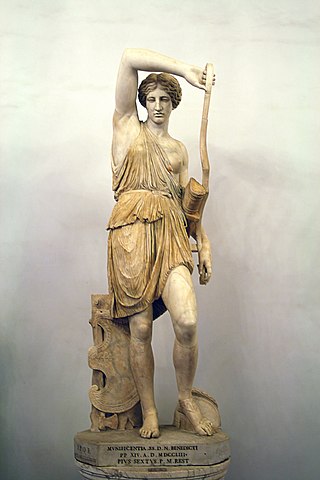
In Greek mythology, the Amazons are portrayed in a number of ancient epic poems and legends, such as the Labours of Heracles, the Argonautica and the Iliad. They were a group of female warriors and hunters, who were as skilled and courageous as men in physical agility, strength, archery, riding skills, and the arts of combat. Their society was closed to men and they only raised their daughters and returned their sons to their fathers, with whom they would only socialize briefly in order to reproduce.

The Calydonian boar hunt is one of the great heroic adventures in Greek legend. It occurred in the generation prior to that of the Trojan War, and stands alongside the other great heroic adventure of that generation, the voyage of the Argonauts, which preceded it. The purpose of the hunt was to kill the Calydonian boar, which had been sent by Artemis to ravage the region of Calydon in Aetolia, because its king Oeneus had failed to honour her in his rites to the gods. The hunters, led by the hero Meleager, included many of the foremost heroes of Greece. In most accounts it is also concluded that a great heroine, Atalanta, won its hide by first wounding it with an arrow. This outraged many of the men, leading to a tragic dispute.

The Nibelungenlied, translated as The Song of the Nibelungs, is an epic poem written around 1200 in Middle High German. Its anonymous poet was likely from the region of Passau. The Nibelungenlied is based on an oral tradition of Germanic heroic legend that has some of its origin in historic events and individuals of the 5th and 6th centuries and that spread throughout almost all of Germanic-speaking Europe. Scandinavian parallels to the German poem are found especially in the heroic lays of the Poetic Edda and in the Völsunga saga.
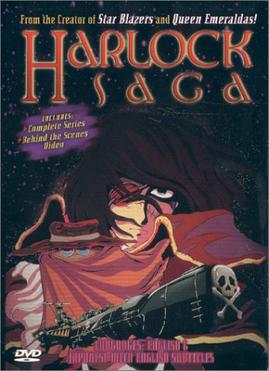
The Ring of the Nibelung is a manga series written and illustrated by Leiji Matsumoto. An adaptation of Wilhelm Richard Wagner epic music drama Der Ring des Nibelungen, it tells the story of space pirate Captain Harlock and his crew as they try to stop a man who has stolen gold from the center of the galaxy and forged it into a powerful ring. It was adapted into a six-part original video animation series titled Harlock Saga.

Margaret, nicknamed Margarete Maultasch, was the last Countess of Tyrol from the House of Gorizia (Meinhardiner), and an unsuccessful claimant to the Duchy of Carinthia. Upon her death, Tyrol became united with the Austrian hereditary lands of the Habsburg dynasty.

Ferdinand II, Archduke of Further Austria was ruler of Further Austria and since 1564 Imperial count of Tirol. The son of Ferdinand I, Holy Roman Emperor, he was married to Philippine Welser in his first marriage. In his second marriage to Anna Juliana Gonzaga, he was the father of Anna of Tyrol, future Holy Roman Empress.
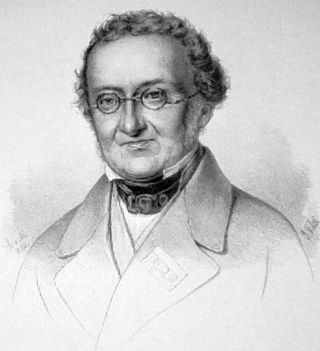
Joseph Hormayr, Baron zu Hortenburg was an Austrian and German statesman and historian.
Austrian literature is mostly written in German, and is closely connected with German literature.

Claudia Felicitas of Austria was by birth an Archduchess of Austria and by marriage Holy Roman Empress, German Queen, Archduchess consort of Austria, Queen consort of Hungary and Bohemia as the second wife of Leopold I.
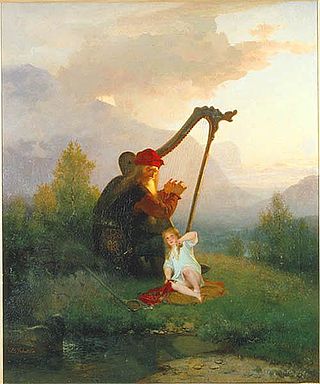
Heime (German), Háma, or Heimir was a Germanic figure in Germanic heroic legend who often appears together with his friend Witige. He appears in the Anglo-Saxon poems Beowulf and Widsith, in the Scandinavian Þiðrekssaga and in German epics such as Alpharts Tod.
Graphic Universe, an imprint of Lerner Publishing Group, was launched in 2006 and publishes books in graphic novel format.

Germanic heroic legend is the heroic literary tradition of the Germanic-speaking peoples, most of which originates or is set in the Migration Period. Stories from this time period, to which others were added later, were transmitted orally, traveled widely among the Germanic speaking peoples, and were known in many variants. These legends typically reworked historical events or personages in the manner of oral poetry, forming a heroic age. Heroes in these legends often display a heroic ethos emphasizing honor, glory, and loyalty above other concerns. Like Germanic mythology, heroic legend is a genre of Germanic folklore.

Edgar Meyer (1853–1925) was an Austrian painter who built himself a castle and engaged in politics.
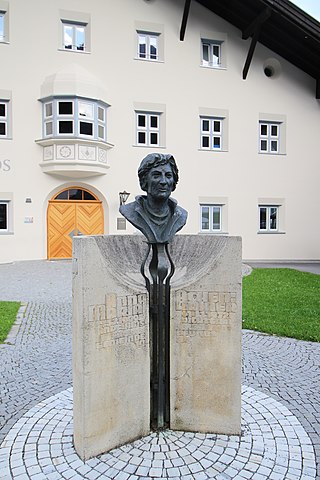
Anna Maria Achenrainer was an Austrian writer.
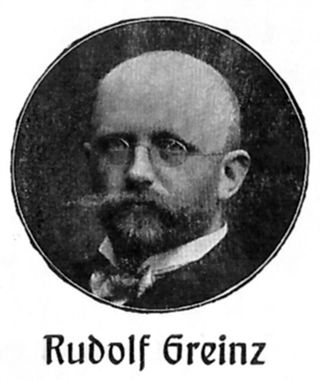
Rudolf Greinz was an Austrian writer. He was born as the eldest of five children of Anton Greinz and his wife Maria. His younger brothers Hugo (1873–1946) and Hermann (1879–1938) were also writers. In 1879 the family moved to Salzburg; his father had been transferred there.
Gertrud Fussenegger was an Austrian writer and a prolific author, especially of historical novels. Many commentators felt that her reputation never entirely escaped from the shadow cast by her enthusiasm, as a young woman, for National Socialism.

Robert Sedlaczek is an Austrian journalist, Germanist and non-fiction author. He is best known for his works on aspects of the German language. In addition, he writes books and articles on cultural history topics. In his book Die Tante Jolesch und ihre Zeit. Eine Recherche he traced the history of the industrial family of the same name as well as the lawyer, Hugo Sperber. These people are characters in Friedrich Torberg's book Die Tante Jolesch.

Hans Haid was an Austrian folklorist, mountain farmer and dialect poet.
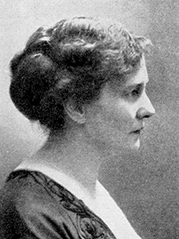
Sigrid Agneta Sofia Elmblad, born Sigrid Agneta Sofia Pettersson, was a Swedish journalist, poet, translator and writer, who translated Der Ring des Nibelungen into Swedish and produced the first Swedish translation of the song of Saint Lucy. she produced her first poems under the pseudonym Toivo. Born in Stockholm to a Swedish father and Finnish mother, she was an early member of the Nya Idun society, rising to be chair between 1918 and 1921. After working as a journalist for the newspaper Dagens Nyheter, she travelled extensively with her husband, the opera singer Johannes Elmblad. While living in Bayreuth, she developed her interest in the music of Richard Wagner, which led her to translate his works into Swedish, including Parsifal in 1917, and the work of other German composers like Robert Schumann. She also wrote fiction for adults and children, as well as biographies for figures like Jenny Lind in 1920. She died in Sweden six years later.
References
- 1 2 Johann Holzner, "Auguste Lechner (1905–2000). Zum 100. Geburtstag". In: Lexikon der Literatur in Tirol und Südtirol, Forschungsinstitut Brenner-Archiv.
- ↑ Auguste Lechner. In: Lexikon Literatur in Tirol. Maria Elisabeth Dorninger: Iwein. Der Ritter mit dem Löwen. Auguste Lechner versus Hartmann von Aue. In: Informationen zur Deutschdidaktik 24 (2000), S. 108–118